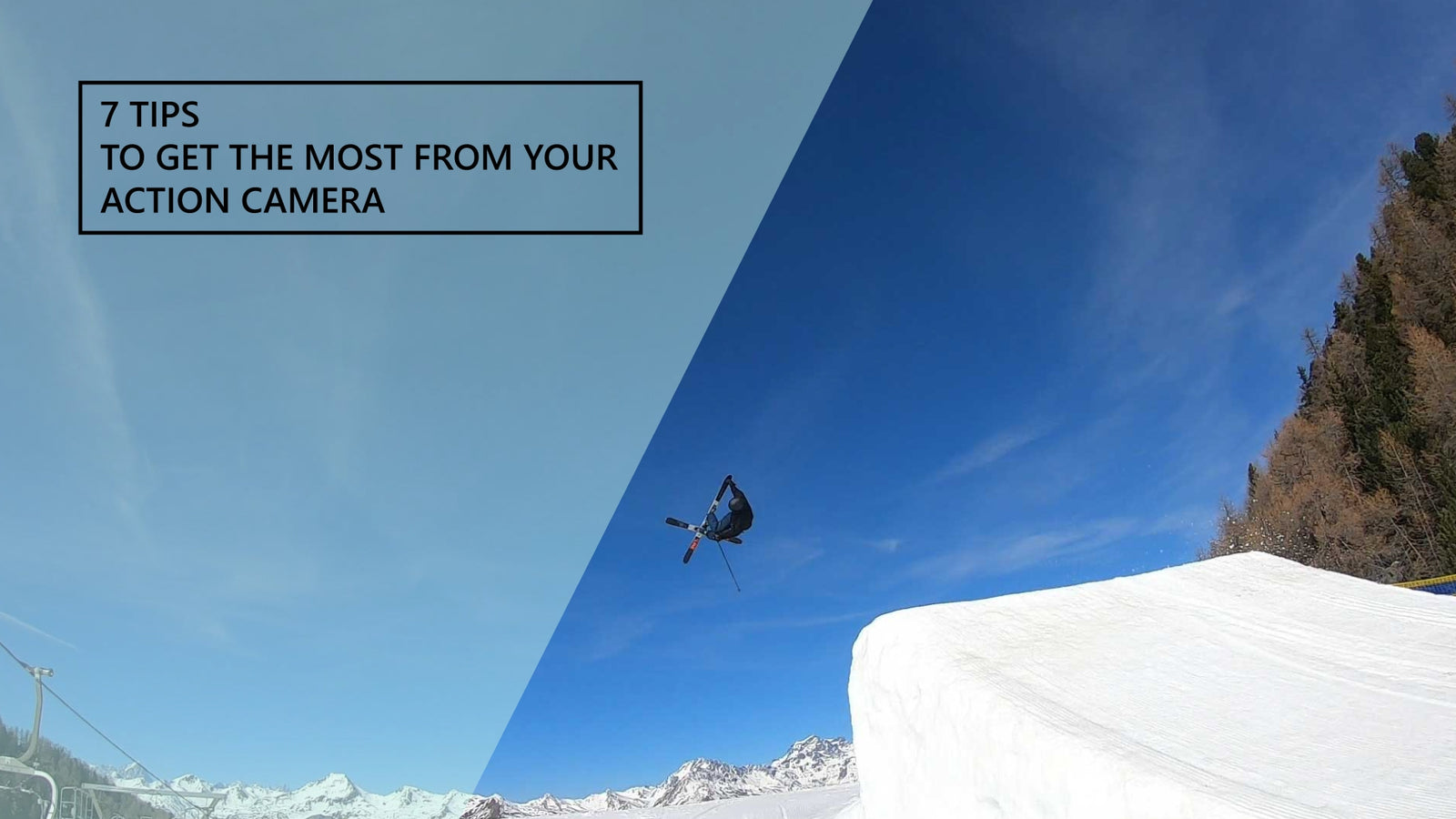7 Tips For Filming With Action Cameras
If you don’t take a selfie on the chairlift, did you even ski?
As a society we’re pretty obsessed with recording everything we do. Now, with the advances in compact, shock proof and waterproof cameras we’re getting the chance to get clips of all our alpine adventures too. However, there are some limitations and things we should remember to get the most from our footage.
Tip 1: These things are not cold proof!
No matter how good the waterproofing is action cameras are normally less than an inch across, and are not be able to keep their internal components warm. Quite quickly they will slow down, lose battery capacity, and when really cold the screens will stop working.
There’s a couple of ways to deal with this, probably simplest is to carry two batteries and keep the spare in you inner layer of clothing.
Something to avoid is letting them warm up too quickly as that can make moist air condense inside the device causing water marks on the inside of lenses and other issues.
Tip 2: Depth of Field.
Fish eye lenses allow for an amazing amount of clarity, a huge depth of field and the ability to get the most amount of stuff in frame as possible. The down side to most action cameras is a limited focus response and no ability to pull focus between subjects. This isn’t always a problem, but it is worth remembering that your framing will need to be more thought out as everything behind you will also be in focus. A messy scene is not a pleasing one.
Tip 3: Memory cards.
Size matters but write speed is damn important. Slow cards can’t handle the amount of data created by a 4K sensor or normal HD at higher frame rates. Look for cards marked over 100mbps.
Tip 4: Direction of light.
Want the best looking colours and crispiest image? Shoot away from or across the biggest light source. (Normally the sun)
When your camera’s kinda small sensor has to deal with large dynamic range (big differences between the highlights and shadows) the camera will expose for the highlights and then boost the sensitivity in the shadows. This then makes the highlights look ok, but the shadows look all grainy and noisy. Avoid this by trying to shoot with the light over your shoulder if possible. On cloudy days it’s not that important as the light will be diffused everywhere.
Tip 5: Avoid vibrations.
Some bits of your kit will vibrate a lot. Think snowboard or skis chatter on hardpack kinda thing. These kinds of vibrations are pretty hard for stabilisers to deal with (although Hypersmooth seems pretty capable with it) so for best results try to attach your camera to something that’s got a bit of padding that will dampen a lot of it out.
Tip 6: Have a plan.
While a random montage of shots may look cool for a bit if you really want people to get a good vibe from your footage it’s super important to think about how you want the finished item to look.
A bit of context from shots about your trip to the slopes and who people are makes the whole film way more relatable and interesting. Plan your key shots, shoot with your edit in mind, and add some B roll to make the whole editing bit way easier in the long run.
Tip 7: Be Inventive!
Due to the huge amount of video recorded and uploaded every single day we, as a society, have become very good at skipping over things. Go for some inventive shots, mix up your edits, and mess around with new ideas. There are no rules, especially if you're the camera operator, director, actor, and editor!!
a little inventiveness goes a long way...and your edit will be much more fun to watch!
All in all, the tiny action cameras we have today are amazingly capable. For the most part you just set it going and it handles the focus, exposure, and frame rates all by itself whilst being subjected to some pretty harsh treatment.
But with a little planning and some basic tips you can get even more from them by playing to their strengths.
You can check out our range of GoPro’s and accessories.
 Call Today
Call Today


